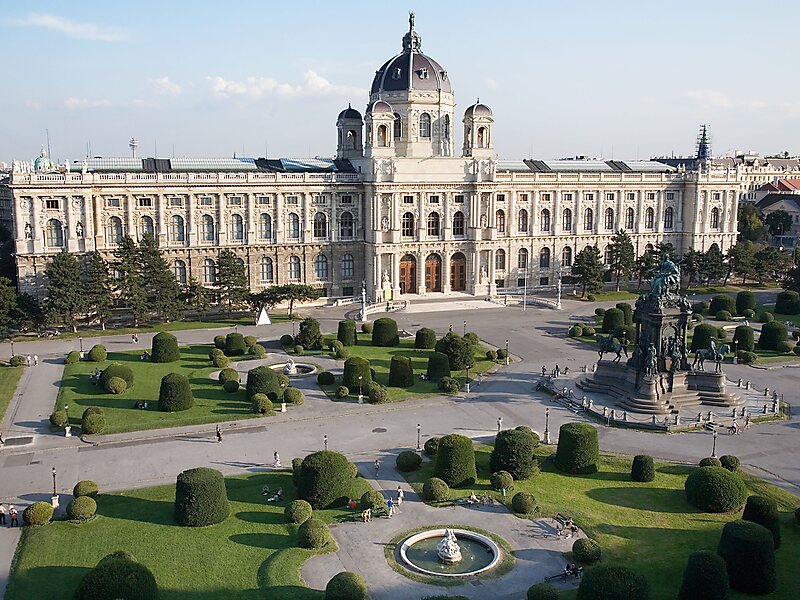The museum opened in 1889, and while originally it was meant to house the Habsburg's possessions, it became one of the most known museums dedicated to natural history.
Take a good look at the building, as the immense attention to detail and the work that was put into decorating its facade is a sight to behold on itself. The figures and statues you will see when you go there represent the progress in various fields of science over the years.
The museum itself features a huge collection of minerals and gemstones, meteorites (largest display collection in the world), fossils of different species, planetarium, it has exhibitions related to the ice age, evolution, prehistory, anthropology and so much more. Probably the most notable items in the museum are the Venus of Willendorf (statuette of a female figure estimated to have been made between 28 000 and 25 000 BCE), the skeleton of Diplococus, and a huge topaz crystal weighing 117 kilograms.
Don't forget to check out the special exhibitions that change over the course of a few months. The museum's exhibition size means you will probably be overwhelmed if you attempt to visit everything at once. You can get here by tube: U2, U3 (station Volkstheater), or by tram: 1, 2, 46, 49, 71 (station Dr. Karl Renner Ring).

Adults: €12
Seniors: €10
Students, soldiers under 27: €7
Children, youth under 19: free
Wikipedia https://en.wikipedia.org/wiki/Natural_History_Museum,_Vienna
Official website http://www.nhm-wien.ac.at/en
Facebook https://www.facebook.com/Naturhistorisches.Museum.Wien
Twitter https://twitter.com/nhm_wien
Email info@nhm-wien.ac.at
Phone +43 1 52177-0
Address Burgring 7, 1010 Vienna, Austria
Coordinates 48°12'18.964" N 16°21'35.107" E